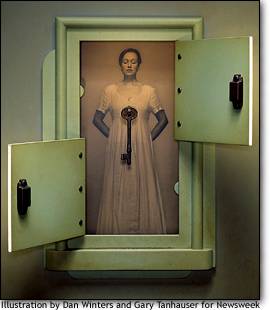|
Dec. 2, 2002 issue —
Whether you regard it as an annoyance or a miracle, you have to marvel at the power of suggestion. When doctors test a new medical treatment, they conclude that it works only when patients who receive it fare significantly better than those given a fake treatment, or placebo. That’s because many people feel better no matter which one they receive.
SKEPTICS OFTEN DISMISS responses to complementary and alternative therapies as “mere” placebo effects. And until recently, experts have paid the placebo effect only grudging respect, some insisting that people who experience it must have simply misperceived either their illness or their recovery. Most doctors and scientists, however, believe the placebo effect exists. And though its dynamics are still something of a mystery, its power is now hard to deny. Recent studies suggest that the placebo effect not only exists but may be caused by changes in the physiology of the brain.
Researchers have found, for example, that when people on placebos experience pain relief, their own brains are releasing pain-relieving chemicals called endorphins. Depression studies have yielded similar findings, showing that the 45 percent of sufferers who improve on placebo exhibit clear changes in brain chemistry, not just altered perceptions.
Even more provocative is a recent study of patients with Parkinson’s disease, a condition in which one part of the brain (the striatum) stops producing enough dopamine to support normal movement and muscle control. Drugs called dopamine agonists can relieve patients’ symptoms by substituting for the missing dopamine. But placebos can bring relief, too—and not just by helping people ignore their symptoms. In a study published last year, scientists at the University of British Columbia found that placebos improved the symptoms of Parkinson’s disease in some subjects and that, in these individuals, increased amounts of dopamine were produced in the striatum of their brains.
The placebo effect is the healing that occurs not because of a particular drug or treatment but because of the expectations, beliefs or hopes embedded in the encounter between a patient and a clinician. By examining the placebo effect, researchers are mapping the mind-body connection and trying to identify the specific pathways through which mental factors alter people’s symptoms or even an underlying disease. Here are some of the variables now coming to light:
The person. Studies suggest that trial participants are more likely to experience a placebo effect if they believe strongly in the treatment they are helping researchers evaluate. Doctors’ attitudes may also affect outcomes, too. Studies suggest that when physicians are hopeful and enthusiastic about the active treatment in a study, their patients are more responsive to placebo.
The illness. Placebos may work better for some conditions than others. Studies suggest that maladies with vague causes (such as aches or fatigue) are more responsive than conditions whose origins are obvious and structural (like a broken bone). By the same token, placebos tend to work better with acute pain than chronic pain.
The treatment. The usual placebo is an inert pill that has no direct physical effects. In some studies, however, patients receive an “active placebo”—a drug that causes noticeable symptoms (rapid heartbeat, for example) but has no therapeutic effect. Not surprisingly, patients receiving that kind of placebo are more likely to believe they are being treated with the active medicine—and more likely to experience relief.
Danish scientists recently expressed skepticism about the placebo effect. They pointed out that very few clinical trials have included three groups—one that receives an active medicine, one that receives a placebo and a third group that gets neither. The Danish scientists found that in the few studies that have included three groups, results in the placebo group were often no better than in the no-treatment group. As a result, the Danes wonder whether people who improve on placebos would do just as well on their own. To get at that question, researchers will have to conduct “three-armed” trials designed specifically to compare untreated patients with patients getting placebos.
The NIH Center for Complementary and Alternative Medicine is now supporting research focused squarely on the placebo effect. Besides demystifying the placebo effect, this research could help address many of the questions surrounding complementary and alternative medicine. Do CAM therapies, as delivered by a typical practitioner, deliver a larger dose of placebo effect than mainstream therapies? If so, how do they do it? Do the themes of complementary and alternative medicine—the mystery of vital energy, the beauty of nature’s restorative power—enhance the placebo effect? Do different CAM therapies trigger different chemical responses in different parts of the brain? And how much depends on the relationship between the practitioner and the patient? Does a procedure that involves laying hands on a patient have more placebo potency than a less intimate treatment, such as a pill? Science can answer these questions—and all of medicine will grow richer as it does.
Kaptchuk, Eisenberg and Komaroff are faculty members at Harvard Medical School.
© 2002 Newsweek, Inc.

Return to PLACEBOS
|

